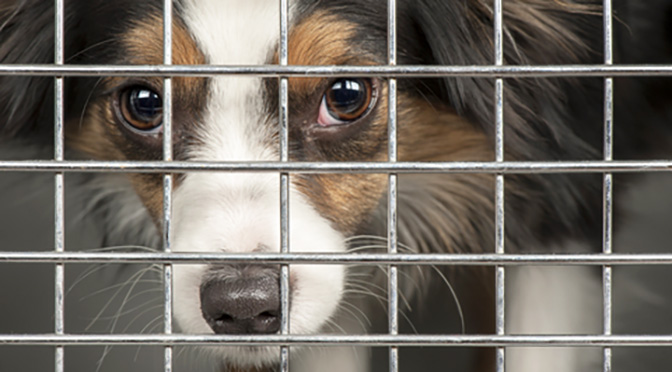- Not a substitute for professional veterinary help.
There is no cure for rabies. You read that right. Rabies is a viral disease that is fatal to animals—and every mammal is susceptible to it. Tens of thousands of people die every year worldwide from this disease. So why are some people convinced that avoiding the rabies vaccination is in their best interest and that of their pets? Read on for more information about how the rabies virus works, how you can avoid rabies infection, the important clinical signs of rabies, and what to do in cases where your dog is not healthy enough to be vaccinated on a normal schedule.
Symptoms of Rabies in Dogs
An infected dog can start spreading the virus in as little as 10 days but show no symptoms for up to 8 weeks.
The rabies virus spreads through biting and saliva, or through blood transmission from a rabid animal to another animal. The virus itself causes inflammation in the brain and spinal cord, which leads to rabies symptoms. After a typical incubation period of up to a week, the rabies virus can have a broad range of effects on the nervous system, which lead to behavioral changes. The infected animal can either exhibit hyperactive symptoms (furious rabies) or weakness and loss of coordination (paralytic rabies).
Rabies for dogs symptoms include:
- Pica (eating non-food items like dirt or rocks)
- Fever
- Seizures
- Paralysis
- Hydrophobia (aversion to water)
- Jaw is dropped
- Inability to swallow (foaming at the mouth)
- Change in tone of bark
- Muscular lack of coordination
- Unusual shyness or aggression
- Excessive excitability
- Constant irritability/changes in attitude and behavior
- Paralysis in the mandible and larynx
- Excessive salivation or frothy saliva
You may have heard that the rabies virus causes fear of water, but this is not entirely accurate. The rabies virus causes central nervous system changes that make it difficult for a dog to swallow, which is why an infected animal may develop an aversion to drinking water but not necessarily to seeing or touching it.
When Rabies Strikes

source: MedChrome.com
Unfortunately, there is no treatment for unvaccinated dogs with rabies. If a vaccinated pet is bitten by a suspect animal, your dog must go immediately for a booster shot, and be put under quarantine for 10 days to prevent the spread of the rabies infection to others. In that time, a professional will watch your pet for any extreme behavioral changes or other rabies symptoms.
If a human who has not been vaccinated is bitten by a suspected rabies carrier, they should immediately receive a combination of human rabies immune globulin (HRIG) and the vaccine. For those who have already been vaccinated, they need only the vaccine. It’s essential that bite victims receive treatment before they begin to show rabies symptoms.
How You Can Keep Your Dog Safe
If a wild animal bites your dog or if your dog bites a person, current proof of vaccination could save their life. Otherwise, six months of quarantine at the owner’s expense or euthanasia is required by the Centers for Disease Control and Prevention to look for clinical signs of the rabies virus, and prevent rabies transmission.
Of the core dog vaccinations recommended by the American Animal Hospital Association’s Canine Task Force, the rabies vaccination is the only one legally mandated because it is fatal and transmissible to humans. And because of its fatal risk to humans, rabies vaccination is understandably an issue of public health. You can look up your state’s regulations on how often your dog needs to receive a rabies vaccine here. For more information on rules and requirements for your dog and animal control procedures in your particular community, contact your local health department.
There is no effective test for rabies that works on a living animal. A sample of brain tissue is required to prove definitively that the virus is present. A Titer test can show whether antibodies are present in the bloodstream, but this antibody test only proves that an animal has received a vaccination at some point—it’s not proof of immunity.
How Often Your Dog Needs a Rabies Vaccine
The statistically small but very real occurrence of adverse reactions to vaccinations has some people questioning the need for so many inoculations in a dog’s lifetime.
The current best practices suggest a 1-year shot at four to six months old, a second 1-year shot after a year, then three-year inoculations for the remainder of the dog’s life. So a dog that lives to 14 years will have had at least seven rabies shots in his lifetime.
“In the three-year period studied (2004-2007), where it’s estimated that 120 million doses of rabies vaccine were distributed in the United States, there were 246 adverse event reports in dogs to the USDA, where rabies was identified as one of the vaccines given.”
The Rabies Challenge Fund is a charitable organization that is studying the rabies vaccine in hopes of extending the amount of time between vaccinations, as well as standardizing the mandated rabies treatment schedule in every state. Even extending the efficacy of the three-year shots to a five-year schedule could significantly reduce the number of shots a dog receives in their lifetime.
Rabies Vaccine Side Effects for Dogs
Anytime your dog is vaccinated, keep an eye out for any of these side effects and contact your veterinarian immediately if you feel your dog is suffering more than usual reactions to vaccination.
- Fever
- Sluggishness
- Loss of appetite
- Facial swelling and/or hives
- Vomiting
- Diarrhea
- Pain, swelling, redness, scabbing or hair loss around the injection site
- Lameness
- Collapse
- Difficulty breathing
- Seizures
Help for the Vaccine-Adverse Dog
If your dog has suffered any major adverse reaction to a vaccine, you will want to discuss with your doctor which and how many vaccines you are willing to have your dog undergo. In some states, a waiver for the rabies vaccination can be obtained for dogs who cannot tolerate the standard vaccination schedule. If your state requires the annual vaccine, this could be a real lifesaver for a dog who struggles with vaccines.
Besides knowing the warning signs for vaccine adversity, and obtaining a medical waiver if necessary, some other considerations to keep in mind when scheduling your next round of vaccinations are:
- Schedule vaccinations at a time you can be home with your dog to keep an eye out for signs of trouble.
- If your dog is already under the weather, wait until he’s feeling great before vaccinating.
- If you suspect your dog is vaccine adverse, try separating the injections instead of doing them all at once. A month between shots may give your pup enough time to recover.
Further reading:
American Humane Association: Rabies Facts and Prevention Tips
World Health Organization: Rabies Fact Sheet
ASPCA: Dog Vaccines | Rabies in Dogs
The information provided in this article is not a substitute for professional veterinary help.





